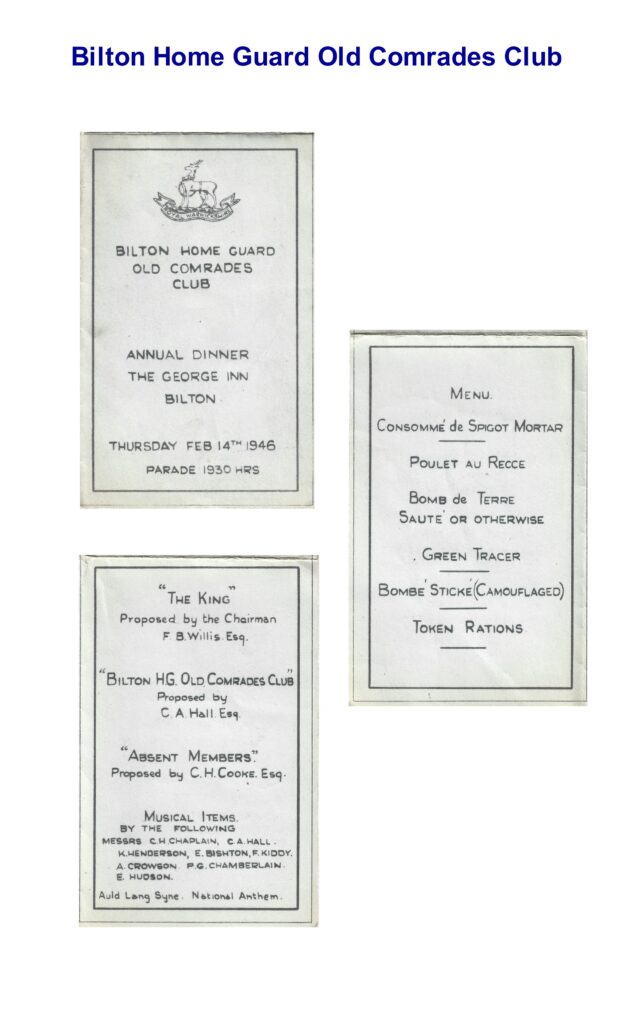Liz Parvin in her 2014 Village Newsletter history of King’s Newnham noted that this period is now into the living memory of some of the more senior inhabitants of the village, allowing her to glean much information from some of the local residents. Jane Bagshaw of Newnham Hall provided insight into this period of our history.
1939 of course saw the beginning of the Second World War the second war in the lifetime of many residents. Although most of the farm workers did not have to go and fight there were many changes in lifestyle for everyone in King’s Newnham. Some of the farms had to host evacuees from London, and they also had residents of Coventry who regularly came to sleep in King’s Newnham and went back to Coventry in the day time.
Jane remembers one couple who went back to find that their shop had been flattened by bombs overnight! Apparently in her household she and her parents and sister slept downstairs while the upstairs bedrooms were occupied by folk from Coventry!
Jane’s father, John Cummins, was the platoon commander for the Home Guard (Dad s Army!). I am told that their drawing room’ became a store room for guns and ammunition, grenades, blankets and sundry other stores. There was a bell in the farmyard so that the police could arrive and ring the bell to call out the Home Guard. Their area included the airfield on the Heath and they had to be prepared to use sheets of corrugated iron to set up road blocks if German paratroopers arrived. Fires were lit in the fields towards Bretford to confuse the bombers and draw them away from Coventry. Whether it was because of this, or because from an aircraft the river looked like roofs, there are accounts of bombs dropped in the field near the river.
There were anti-aircraft guns at Binley and Ryton. On one occasion a plane or glider (Jane is unsure of which it was) came down behind Chapel Wood. Jane’s strongest memory is of finding lots of strips of tinfoil (chaff?) near the wreck; she and her sister used it to decorate their party dresses!
At this time there were more homes in King’s Newnham than there are now There were several buildings at Highfields (down the track from the top of the hill) and there was a house there occupied by the Caddoo family for some years after the war The photo shows the family outside their house, which would have had no mains water or electricity.
There was also a cottage and barn ‘Butlers Barn’ on the other side of the river from the church; it is reported that the residents would cross the river to get to Church Lawford.
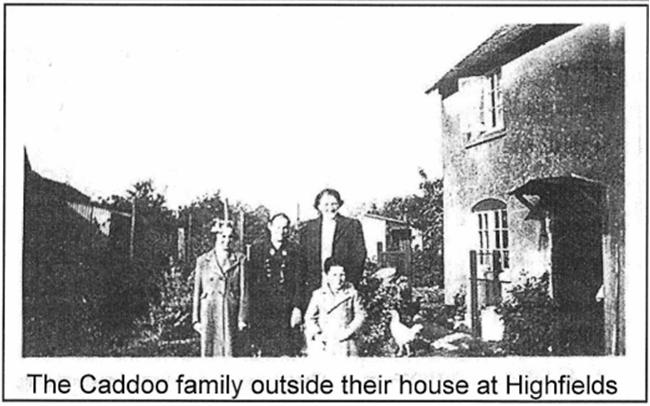
Keith Sinfield in his 2014 Village Newsletter history of Church Lawford noted that although war was declared in September 1939, defences against possible German invasion had already been prepared prior to this: many airfields were built around the country, frontline airfields near the east coast and flight training airfields inland. One such training airfield was RAF Church Lawford, which opened in 1941, and it continued to operate until 1955.
Almost 28,000 pillboxes were built across the country, at strategic points along main roads and near airfields. One of these still exists near where the defunct airfield was located at the roadside in Lawford Heath Lane. In spite of this airfields proximity to Coventry, it appears not to have been targeted. There were, however, a number of operational incidents. In one of these a pilot officer of the Free French air-force was killed when his aircraft overshot the airfield and crashed at Bretford. More about RAF Church Lawford can be found on: https://en.wikipedia.org/wiki/RAF_Church_Lawford or on the page on this website here.
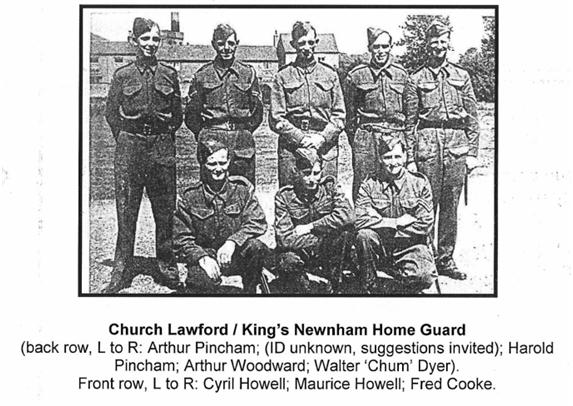
As noted by Liz Parvin, the local platoon of the Home Guard was commanded by Jane Bagshaw’s father, John Cummins. The photograph here shows some members of that platoon – it is possible that the person not listed is Alf Day.
More information about the Local Defence Volunteers that were focussed on the two villages, their methods and challenges can be found in a book called “The story of “A” Sector Warwickshire Home Guard.” which is available at Rugby Library.
During the Second World War villagers again joined in the war effort, both at home and abroad, and there was also the creation of RAF Church Lawford at the south end of the parish, with Ling Hall Farm being replaced with the necessary buildings and infrastructure.
Press coverage of the various campaigns in the Second World War were limited for strategic reasons, but details of one of the two village casualties to appear on the War Memorial have been found.
Sidney Phillip Cross was born in Woodstock, Oxfordshire and lived for a while with his family in Lawford Lodge Cottages, going to school in Church Lawford, working in Wolston once he turned 15, before the family moved to Binley. He died at the battle of Arnhem in September 1944.
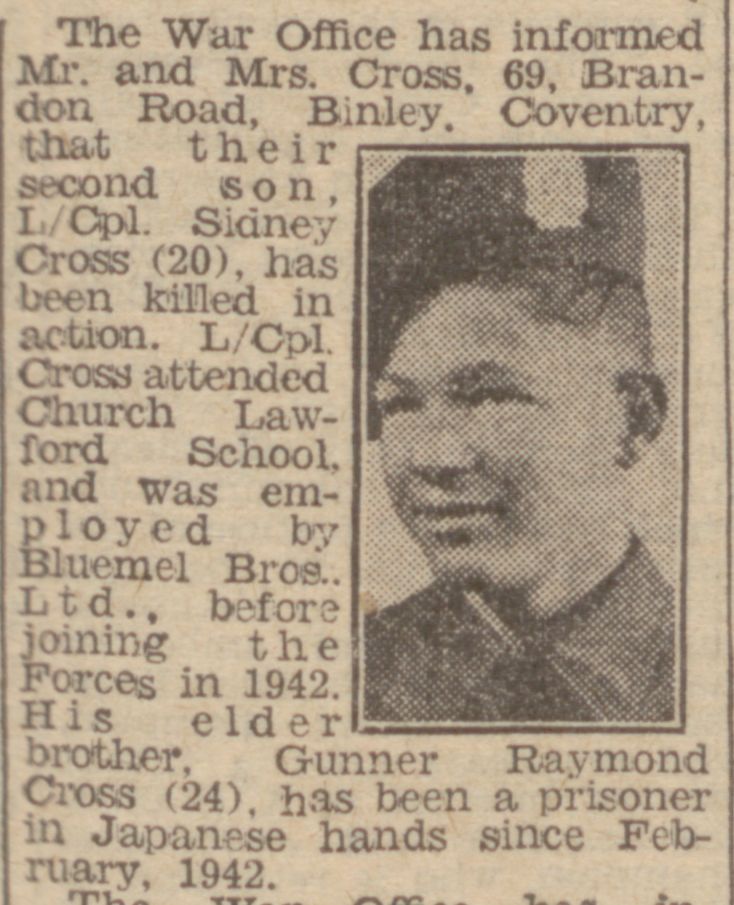

The other village casualty in the war was Sidney Joseph Smith, who succumbed to his wounds on 3rd April 1946 aged 25. He was the son of Thomas and Mary Louisa Smith, who lived in one of the cottages at the top of Church Road in Church Lawford. He served as a Lance Corporal rifleman in the London Irish Rifles, and is buried in a war grave near Florence in Italy.
Both men are recorded on the Church Lawford and Kings Newham War Memorial outside the Village Hall.
The War Ends – 1945
VJ Day on 15th August 1945 was celebrated as noted in the Rugby Advertiser of 24th August
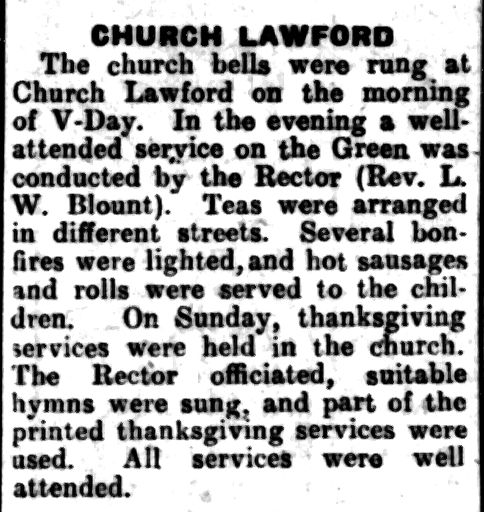
Following the conflict there were various initiatives at District level around rural housing and other challenges that arose after the long period of focus on a wider stage. The clipping below is from the Rugby Advertiser in January 1946, and reports on Council discussions on the options for temporary housing, painting of the council houses in Church Lawford, issues with vermin, whose control had not been a priority in some areas during the war years, as well as the fate of the Church Lawford Air Raid shelter which had been built on land at Fir Tree Farm.
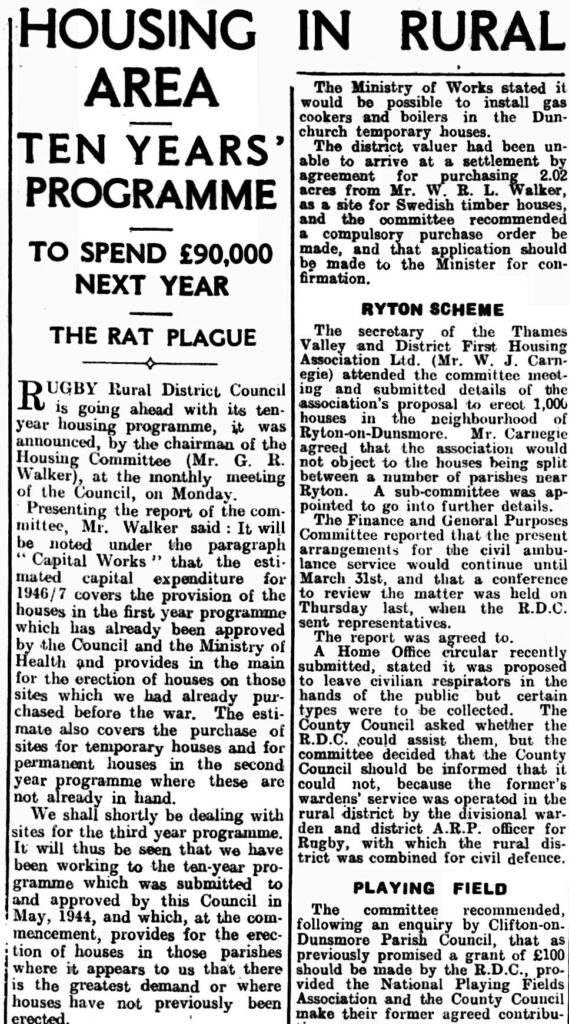
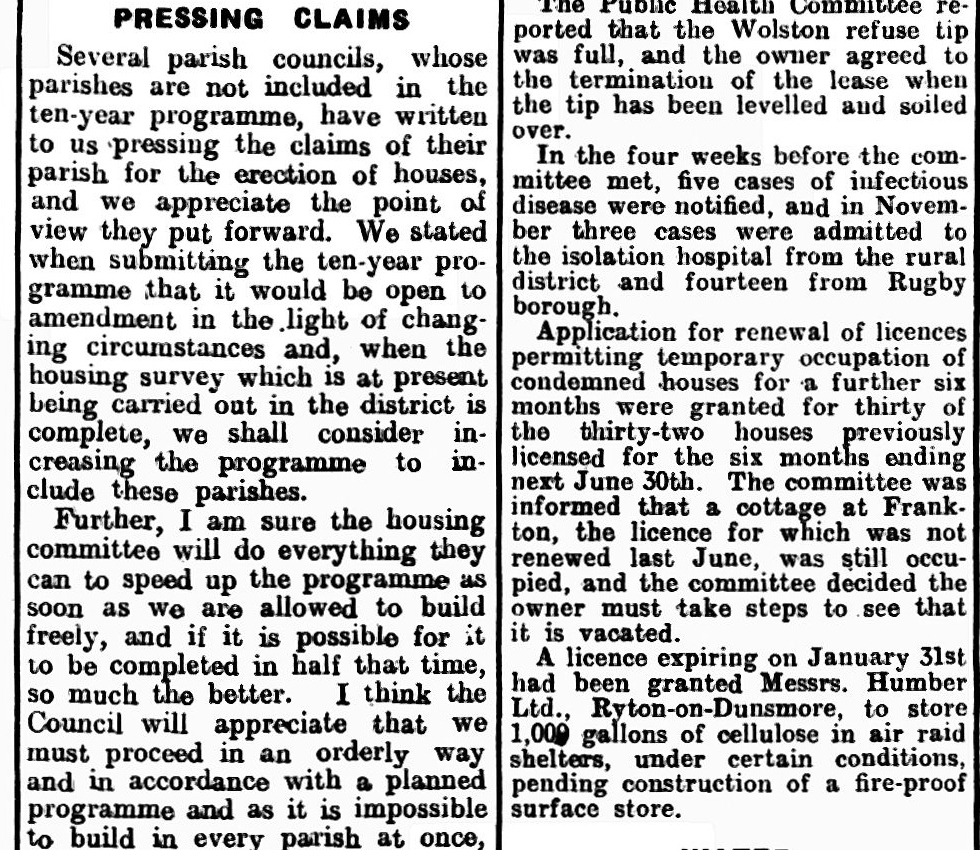
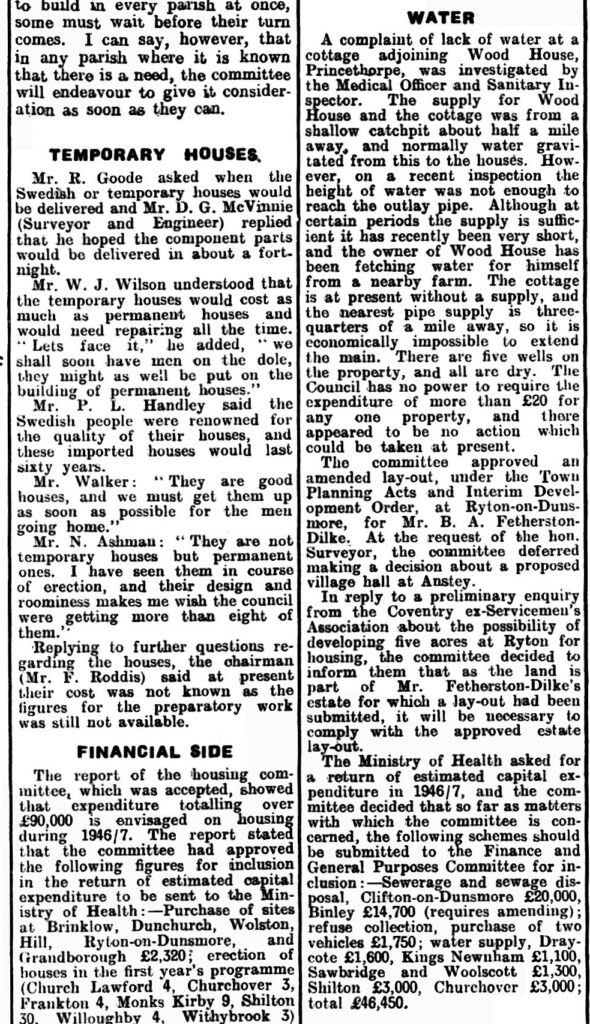
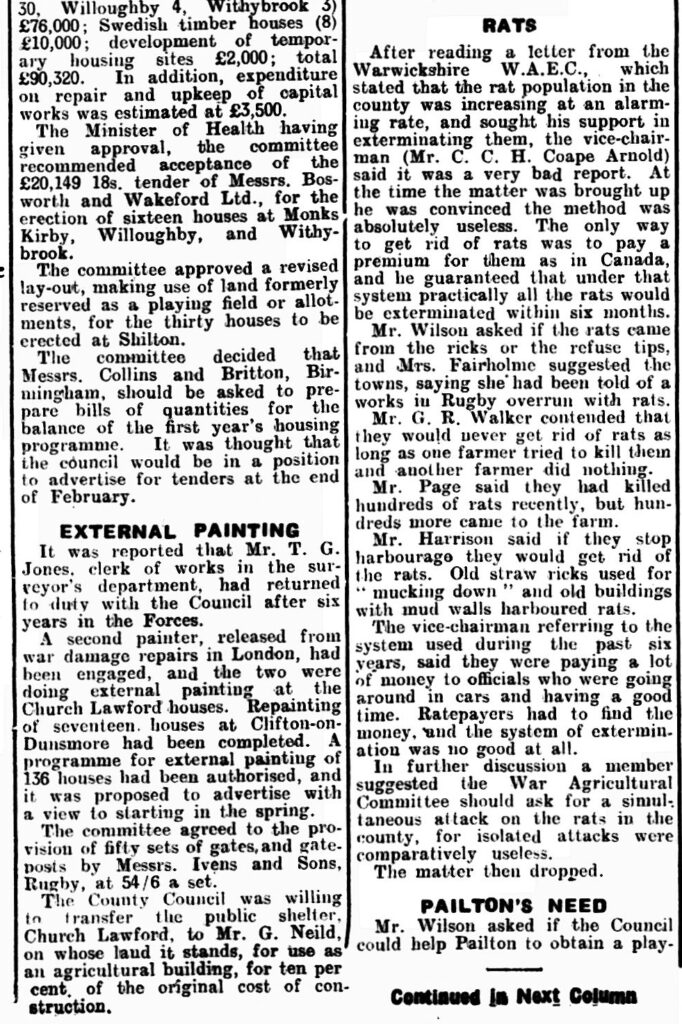
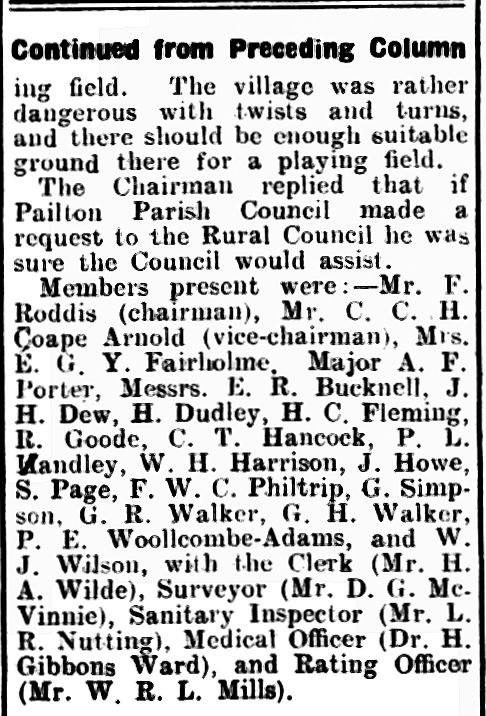
After the War the Bilton Home Guards Old Comrades Club was formed – with an annual dinner – as attended by Fred Cooke.
